Editor’s Note: A competition in Russia was launched to design a church, the first dedicated to the New Martyrs of Russia. The result and the winning design, seen below, is quite glorious and truly stands out among the others. Here is a part of the article from the Pravoslavie.ru website.
On March 25, Pravoslavie.ru posted an open letter from Archimandrite Tikon to the parishioners of Sretensky Stavropegic Monastery detailing the ongoing process of the monastery’s new church building. This is a process that all of Russia is following, because this will be the first church dedicated to the New Martyrs of Russia built within the boundaries of the capital city, where over 13 million people live.
Dear parishioners of Sretensky Monastery,
An open competition for the preliminary design of the Church of the New Martyrs and Confessors of Russia on the Blood, on Lubyanka [Moscow], was announced on October 3, 2012, and concluded on December 10, 2012.
The need for a new and spacious church in our monastery is long overdue. No one knows as well as you that frequently the multitude of parishioners does not fit within the one surviving Cathedral of the Meeting [Sretenie] of the Vladimir Icon of the Mother of God and is forced to listen to a broadcast of the service while standing outside.
Having asked the blessing of His Holiness, Patriarch Kirill, for the design and construction of the church, the Brotherhood of the Sretensky Monastery asked that it be called the Cathedral of the New Martyrs and Confessors of Russia on the Blood, on Lubyanka, timing its consecration for February 2017. In terms of goals and objectives, the following requirements for the future project were given particular emphasis:
“The church should reflect the idea of the House of God, traditional in Russian ecclesiastical architecture, as well as the struggle and triumph of the Russian New Martyrs’ spiritual victory.” This task was of the greatest importance for the planners.
We anticipated a creative solution that would express the idea of the New Martyrs’ heavenly triumph and bear the joy and light of the victory of Christ’s Resurrection, of Christ’s Church over the evil of this world, and of Eternal Life over death. Built for the centennial of the beginning of the past century’s tragic events, this cathedral should be a Memorial Church for the victory of the Lord Jesus Christ and His holy saints, the Confessors and New Martyrs.
Read the full article on the Pravoslavie.ru website
Here are pictures of a few other designs.
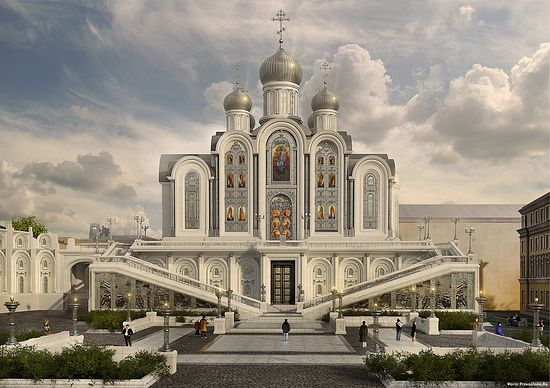
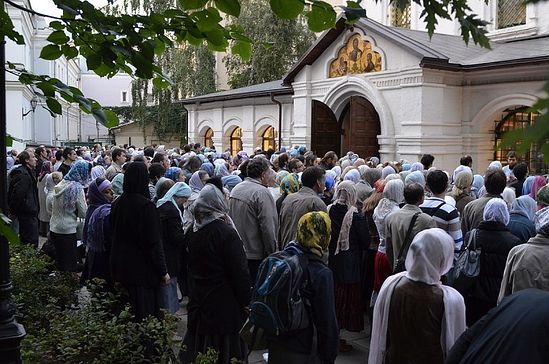
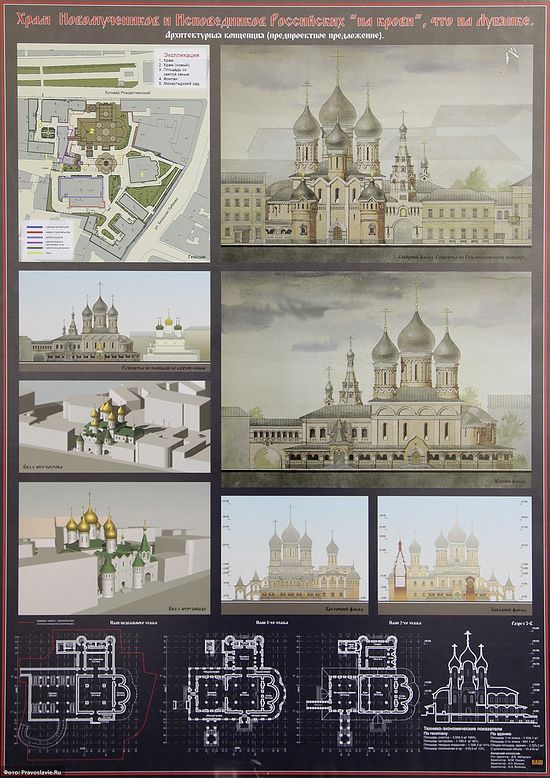
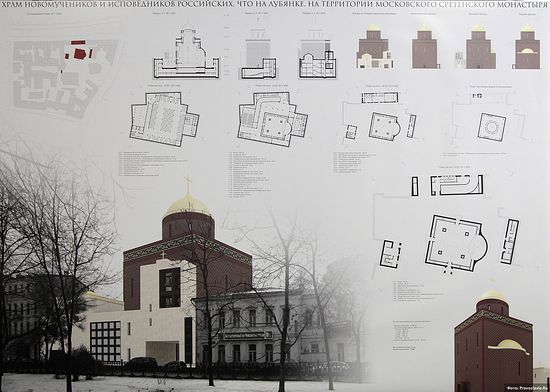
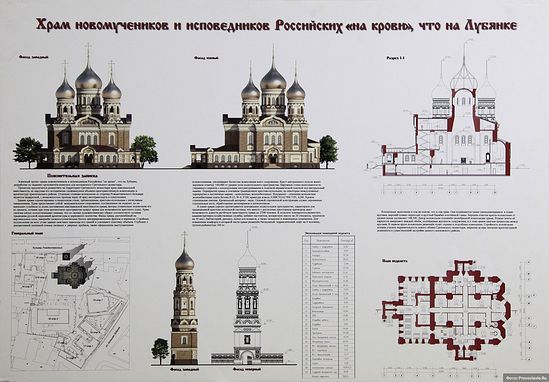
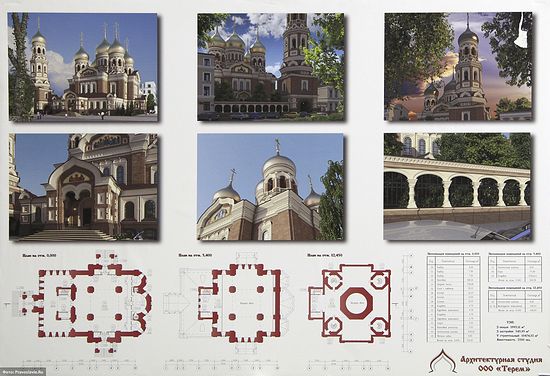
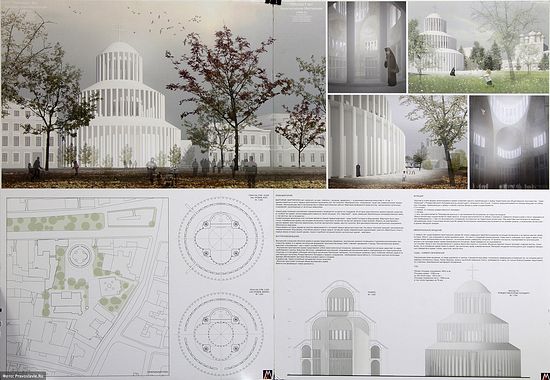
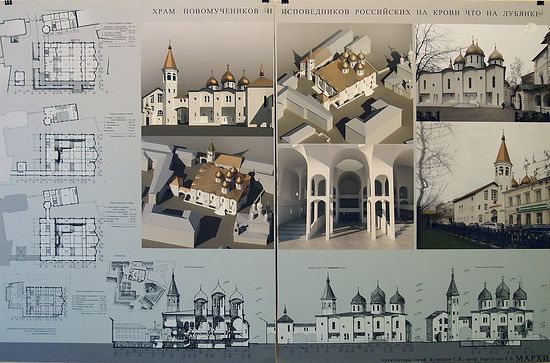
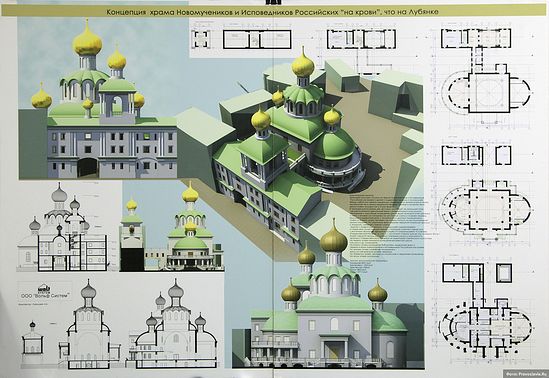
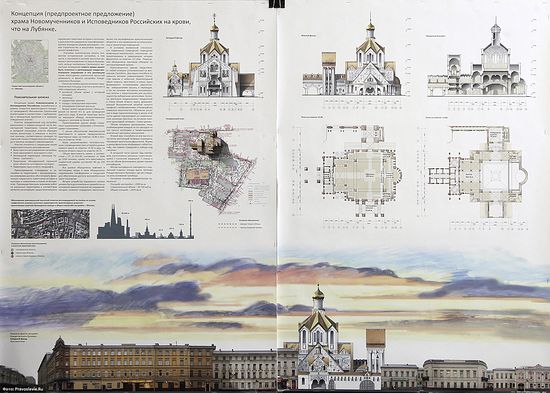
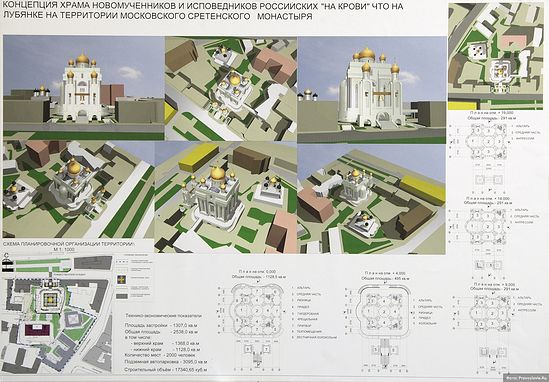
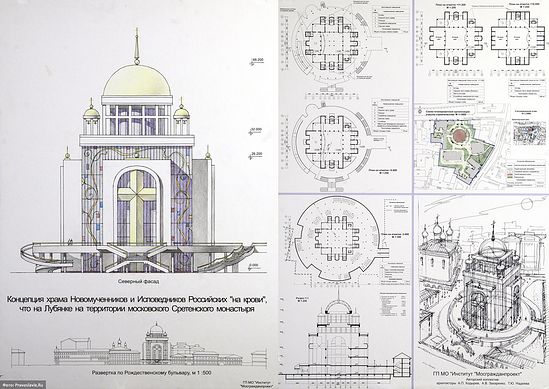
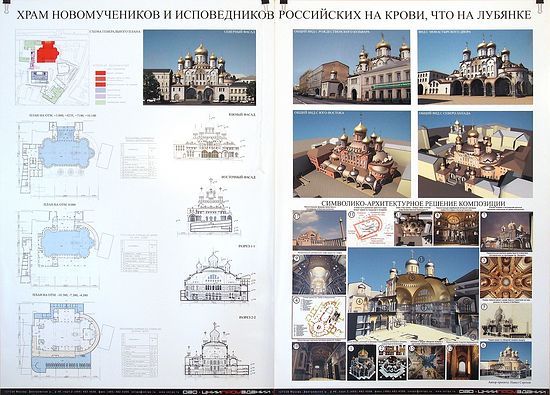
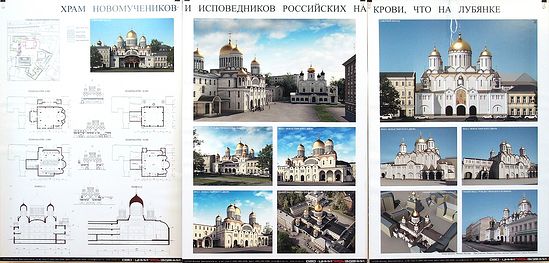
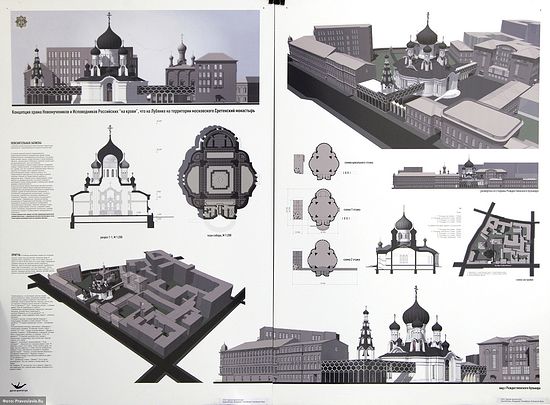
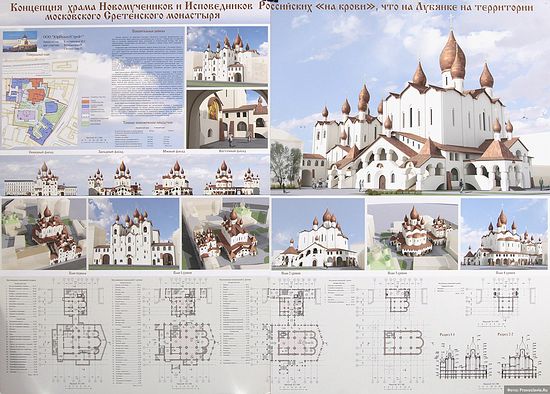
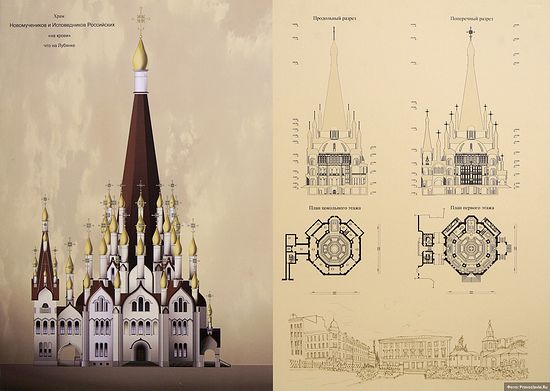
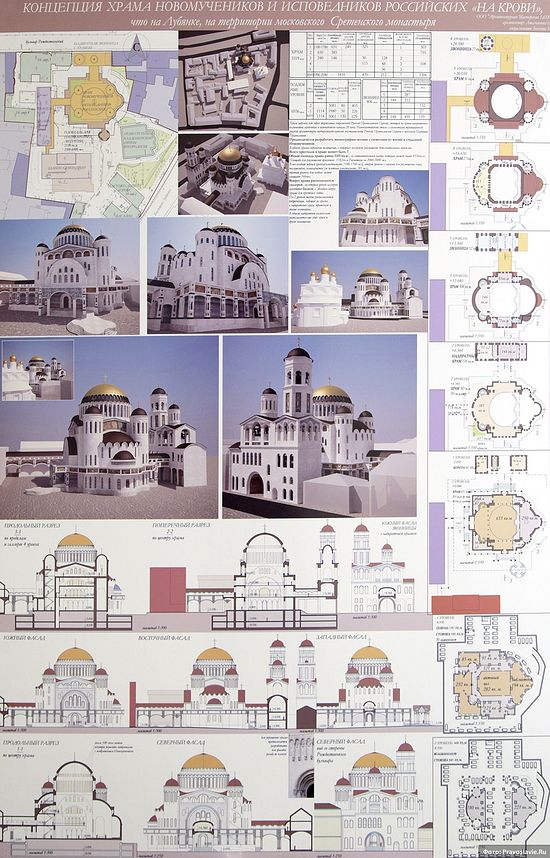
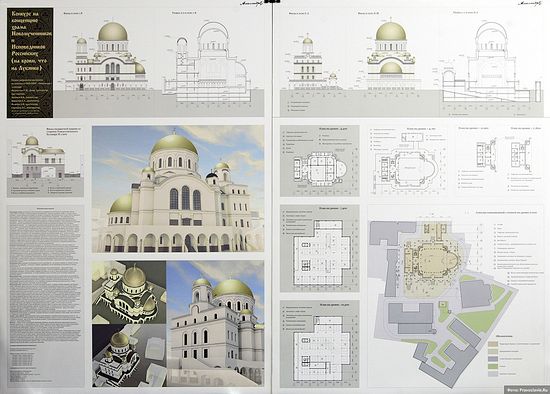
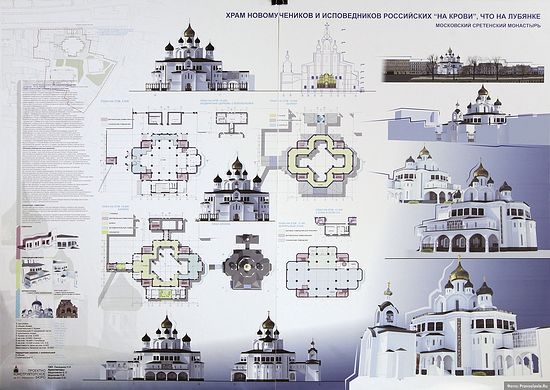
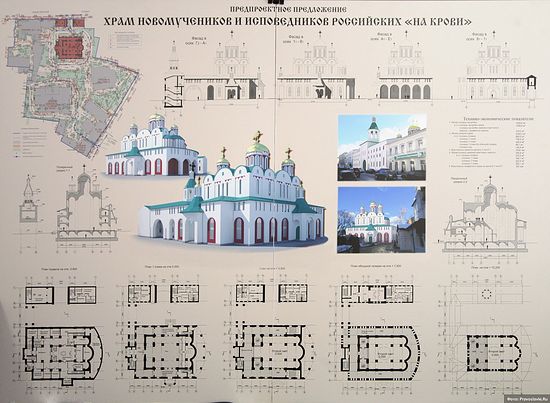
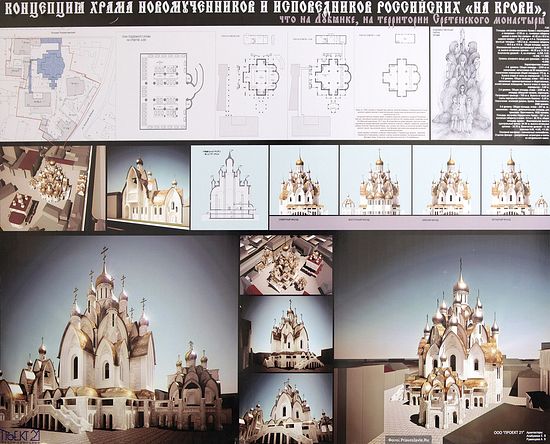
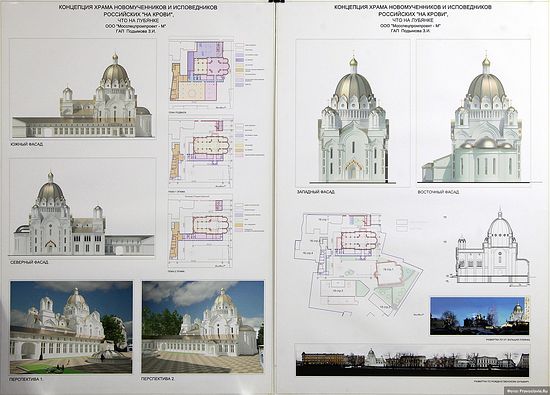
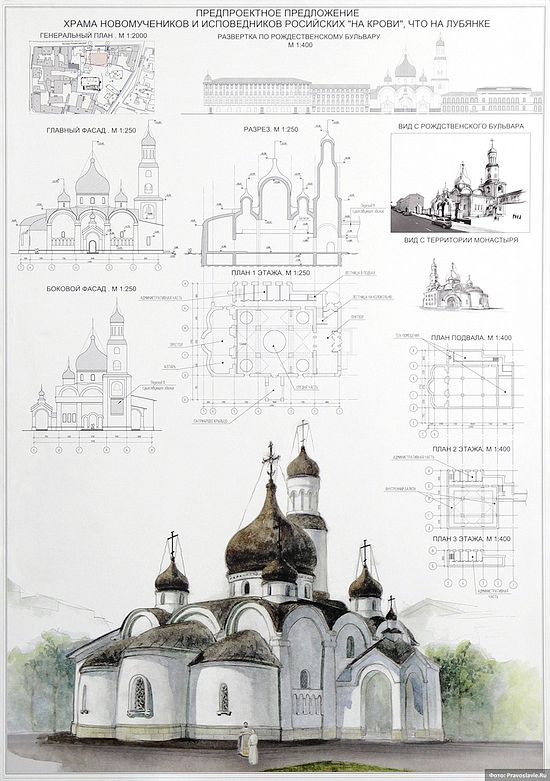
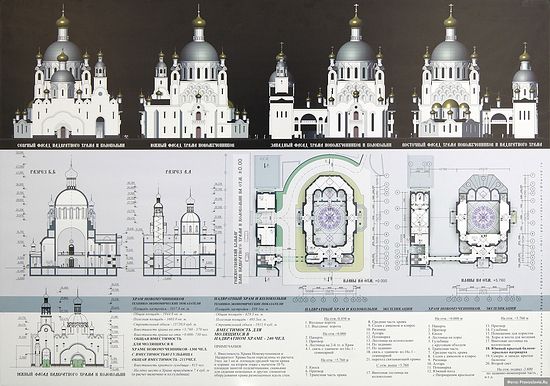
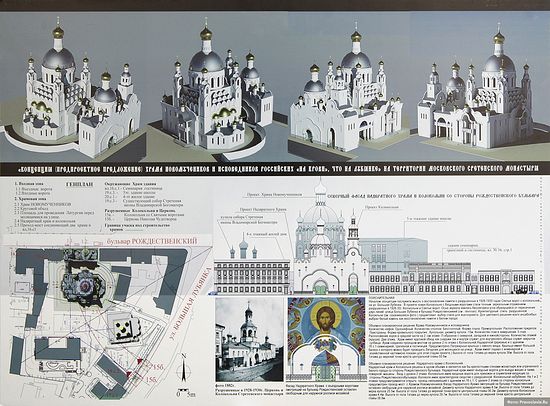
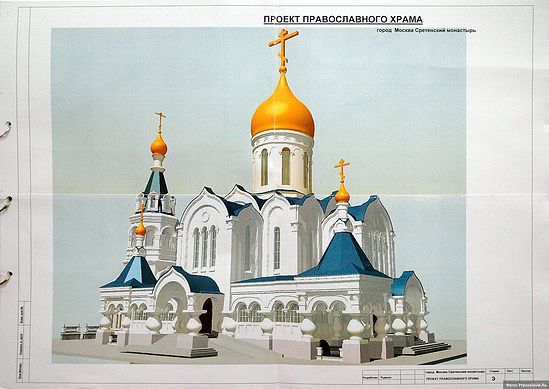
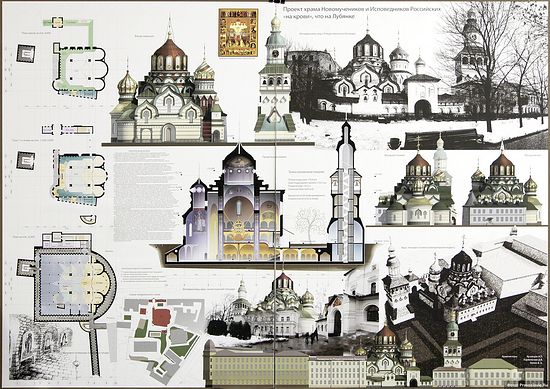
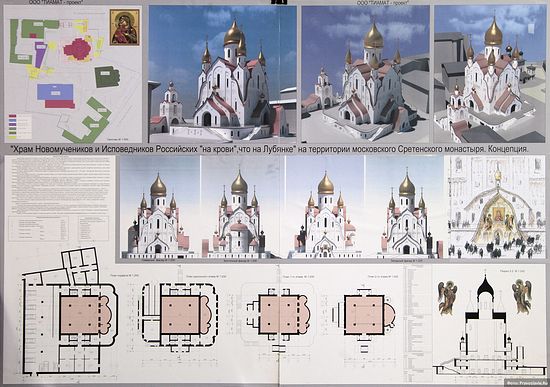
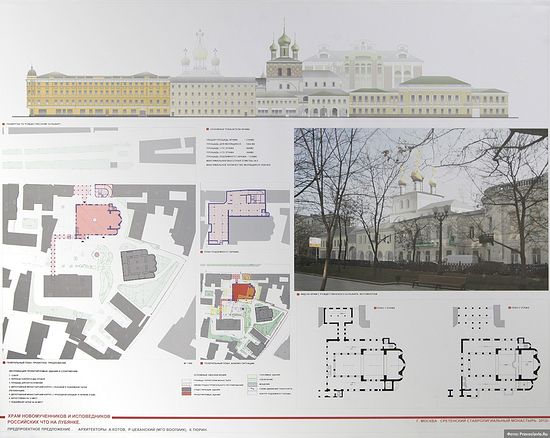
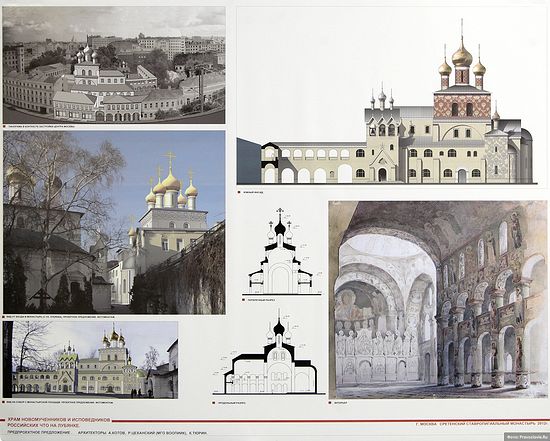
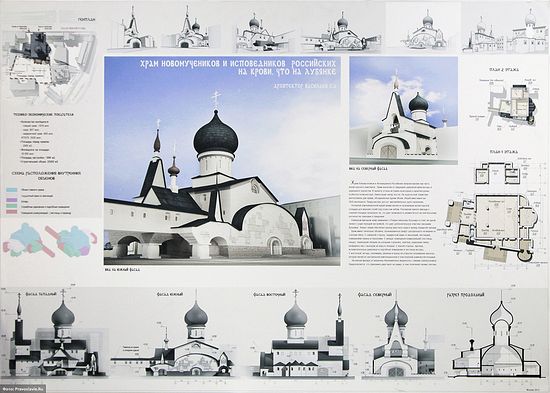
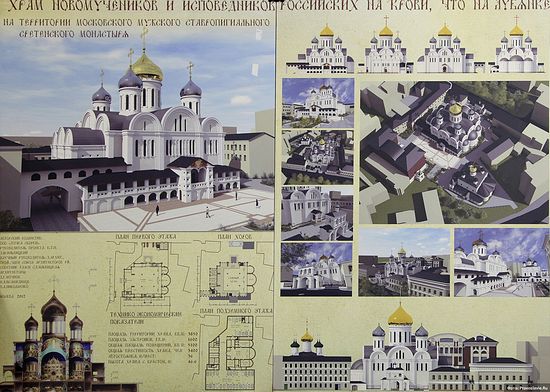
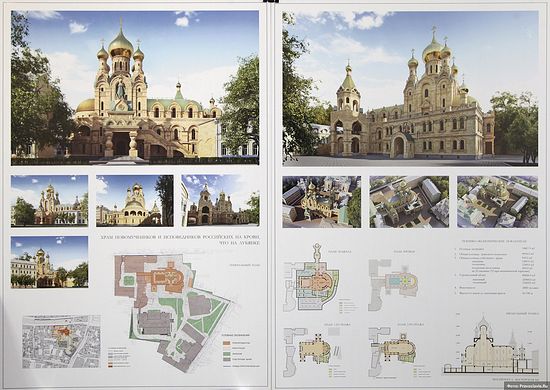
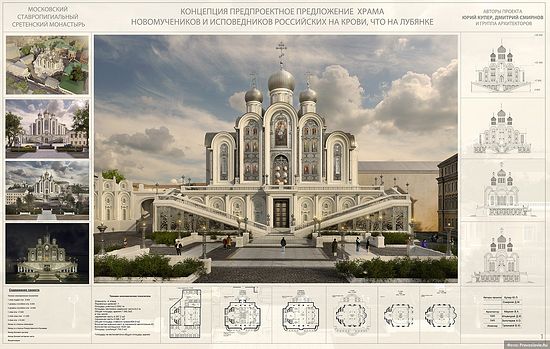

Moscow is full of pompous buildings. This will fit in beautifully. It reminds me of the big railway stations. But I’m not an artist, not an architect and not Russian. I’ll be fascinated to see inside when it is built. Will it actually become a place to pray or just a place to visit?
Please keep us posted.
I am highly impressed by the ambition and quality of many of these competition entries, but I must say I am profoundly disappointed at the selection of the winner. This design has only cold grandiosity, with no charm and humanity at all. It seems intended only to astonish and intimidate. Its pompous and expensive details remind me of Christ Our Savior, which has been roundly criticized for being rebuilt as it was, rather than in more traditional style. There is no reminiscence whatsoever of the soft handmade quality and quiet understated sanctity that make the old cathedral at Stretensky so appealing.
This selection is most distressing because several of the other competition entries are so much better. There are some that have all the charm and humanity of a medieval monastery – everything that is lacking in the winning entry. Thus, it seems that the authorities (or the donor) deliberately chose this aggressive style over real traditional beauty. If this is indicative of church building in Russia generally, then I am afraid Russian churches of our time will be looked back upon as the expression of an aggressive and insensitive era, much like the fascist architecture of the 1930s-40s across Europe.
I agree with Andrew completely. Furthermore, on showing it to a non-Orthodox family member, she remarked that it looked like a Mormon temple. It does!
Hmm… now with all the negative comments I have to wonder why I like it. I think I might like it for some of the reasons others don’t, that is the sheer boldness and power it tries to exhibit. I live in a place of empty falling appart churches being changed into bars and condos. When I saw the design, my mind went: “Take that, Communists!” which may not, I must admit, be the noblest of sentiments…
That is an interesting way to put it. I have no doubt that a similar sentiment prevails among the donors who pay for these big new churches. Also interesting is that similarly grandiose and initimidating churches were built in Russia in the Imperial Period, when the motive was more cultural competition with Europe than anything else. Medieval Russian architecture is devoid of this competitive ethos, perhaps because medieval Russia was always so much on the defensive culturally. Russia lost her artistic way when she went on the Imperial offensive.
“Russia lost her artistic way when she went on the Imperial offensive.”
It seems to me, then, Mr. Gould, that the motivations for your comments are more political than aesthetic. Would you rather that Russia be always in the defensive, then? The Turcoratia certainly didn’t help Byzantine art and neither did the Hapsburg and Ottoman occupation of the Balkan Orthodox.
I’m not Orthodox (Catholic, with a generic interest in most things Orthodox insofar as they parallel things Catholic), and I just lurk around this website largely because it often has pretty pictures. So I may be out of place to speak up.
But I must say that I think the criticism of the selected design is maybe a bit heavy-handed. My personal preference would be for this design – http://www.pravoslavie.ru/sas/image/101088/108880.b.jpg – but I for one like the mix of tradition and modernity in the selected design. And I can’t help but think that the triumphalism inherent in the design is somewhat appropriate considering the significance of the building.
But as I said, I’m commenting as an outsider whose experience of this sort of thing is less tied to the experience of the faith than everyone above.
The church design selected is actually being criticized in Russia not because it is too big, but precisely because it is too small. It will apparently fit it only about 1,200 people when the competition called for a cathedral that would fit in 2,000. Remember that this is about providing Moscow’s most populous monastery a church that can fit the huge crowds that attend its liturgies. This is not about providing a small fuzzy church to appeal to Westerners.
The selected church is also designed to look like an iconostasis for outdoor liturgies.